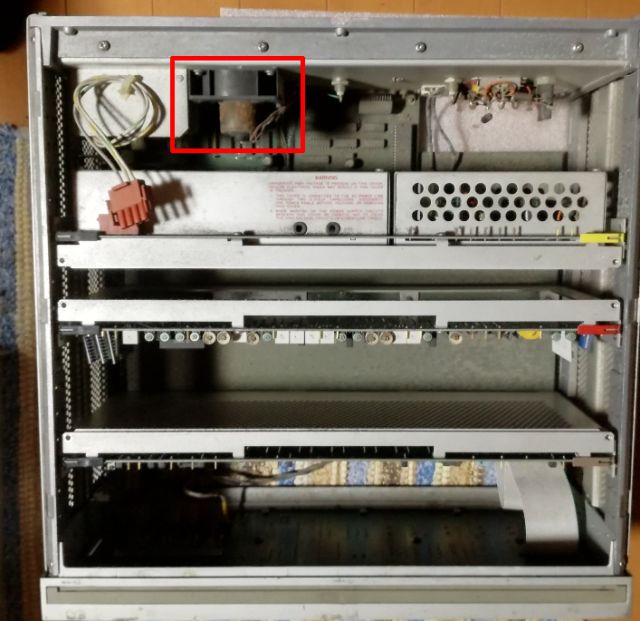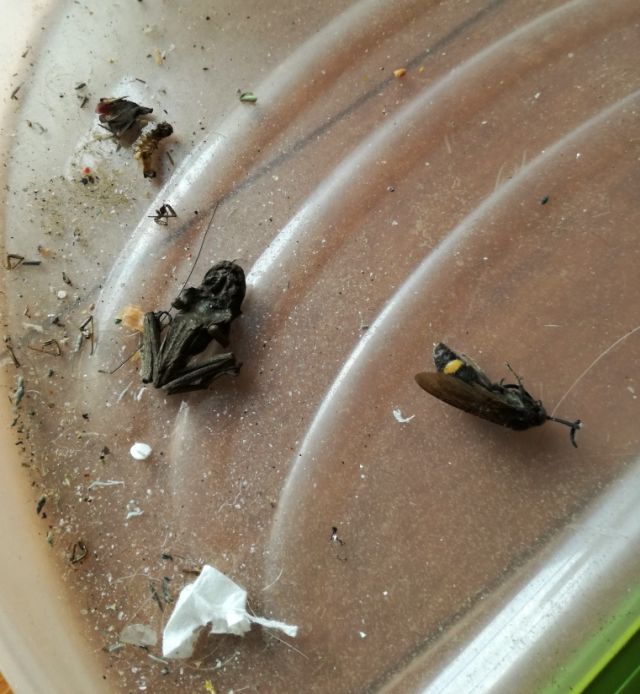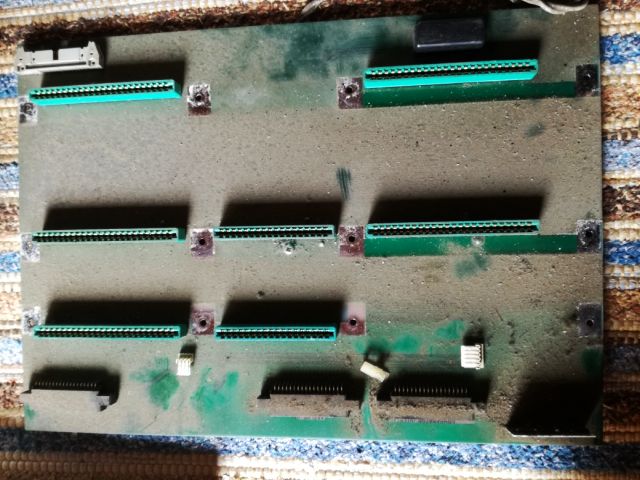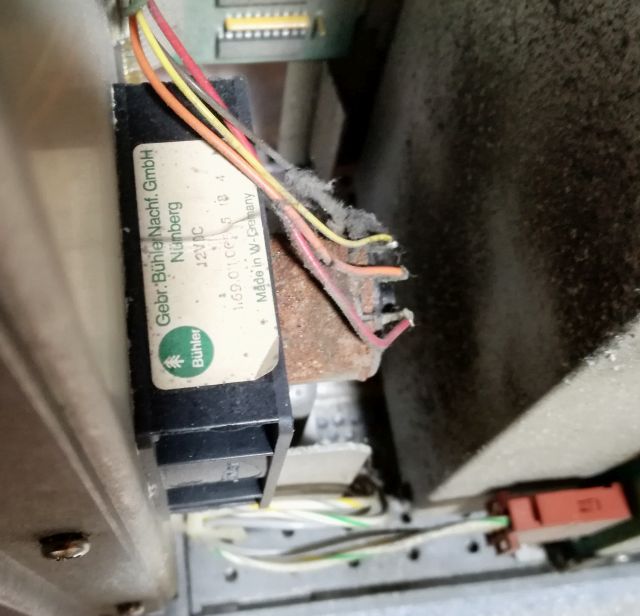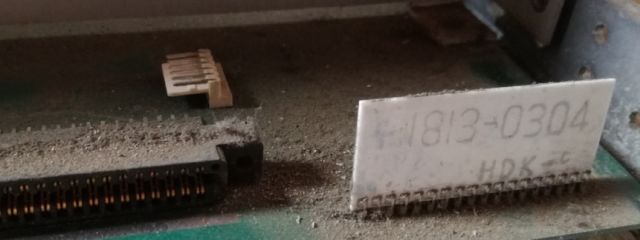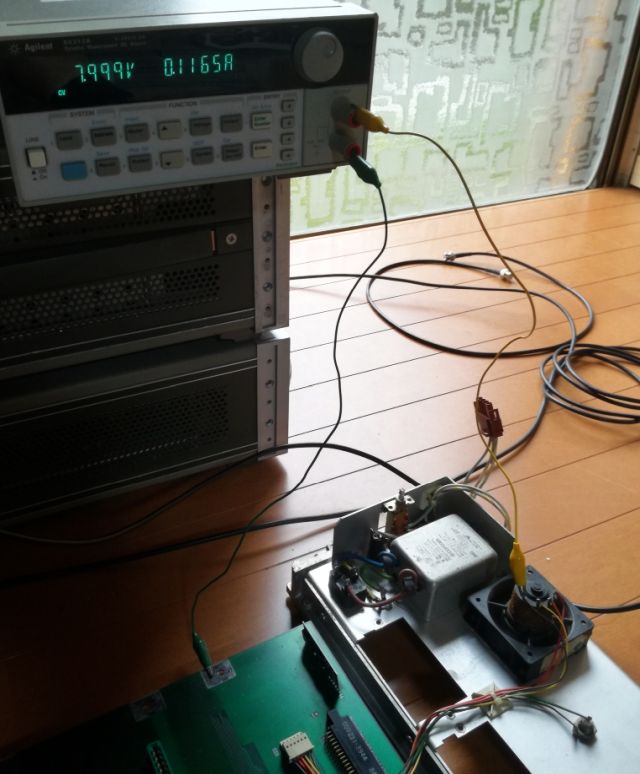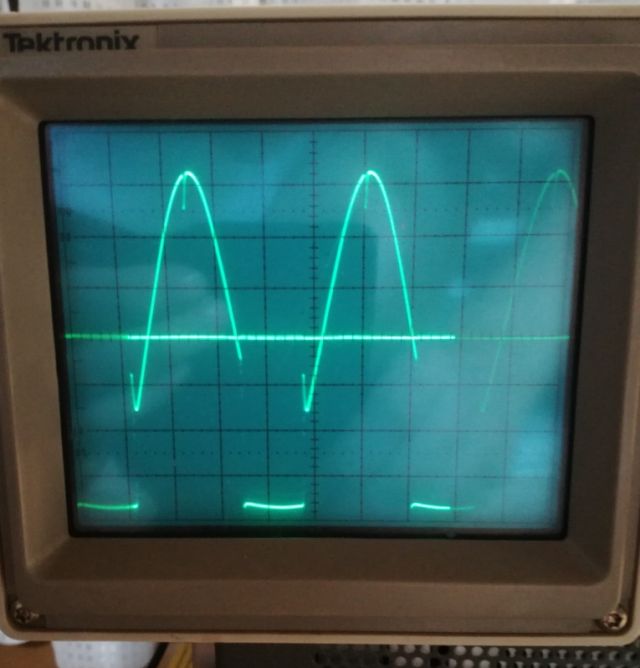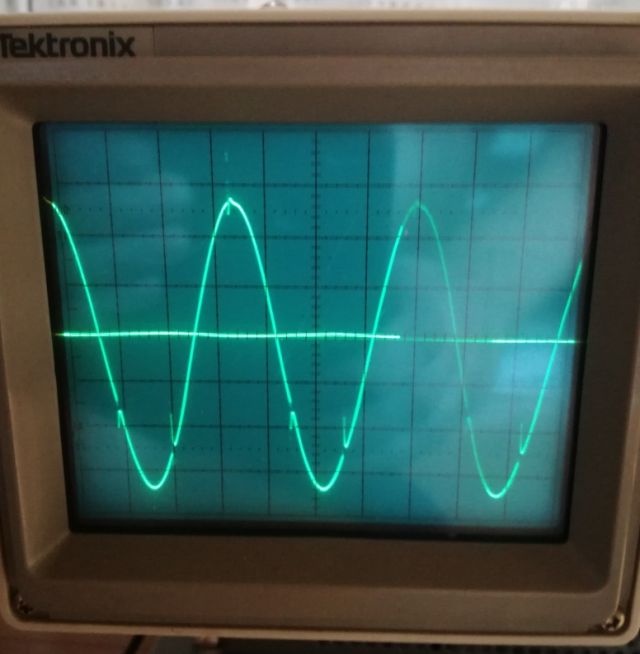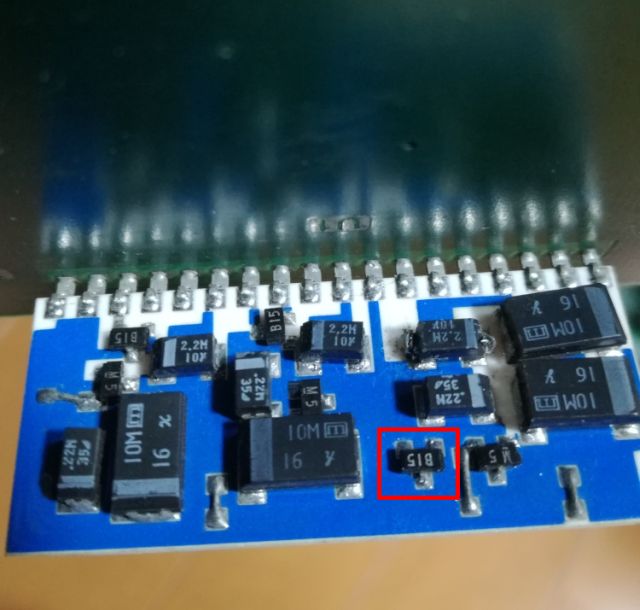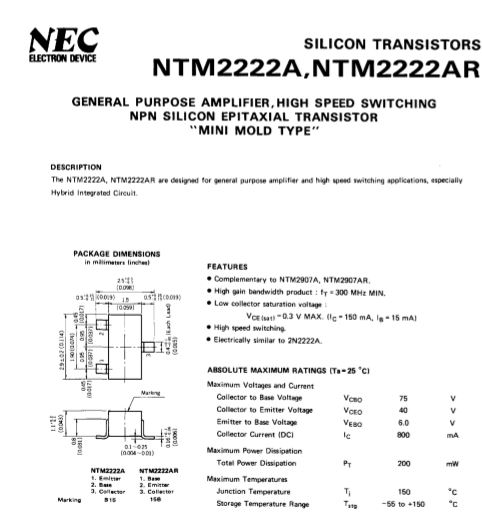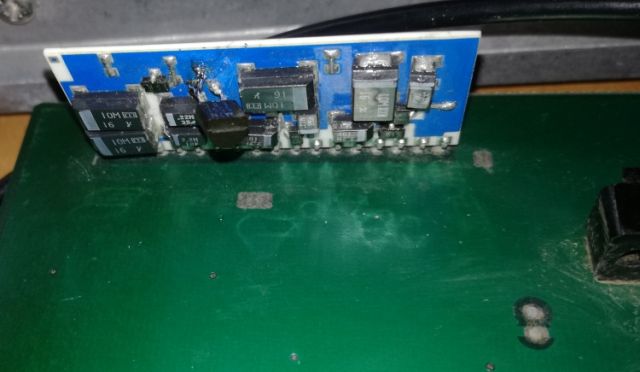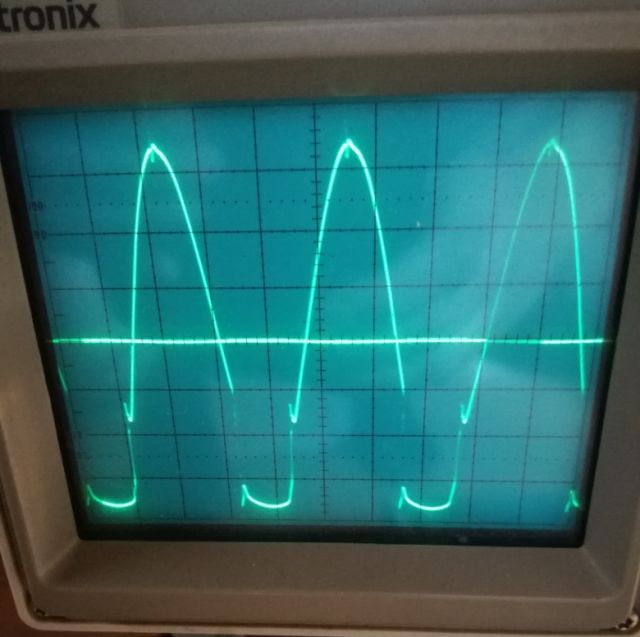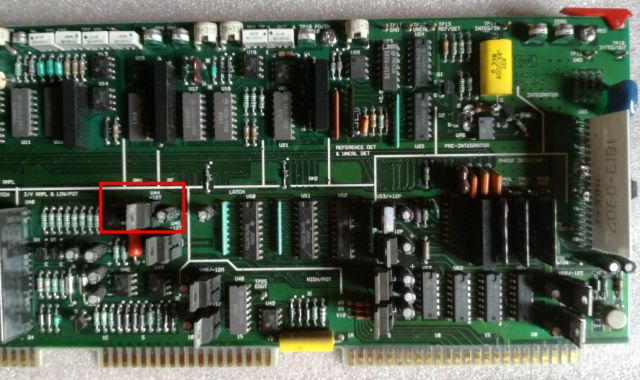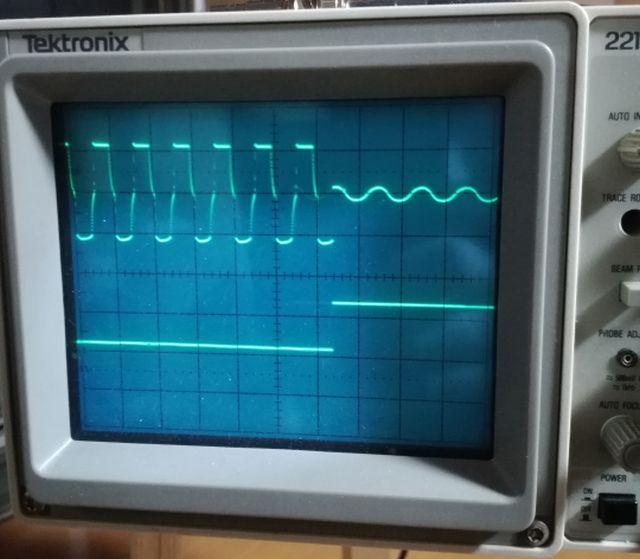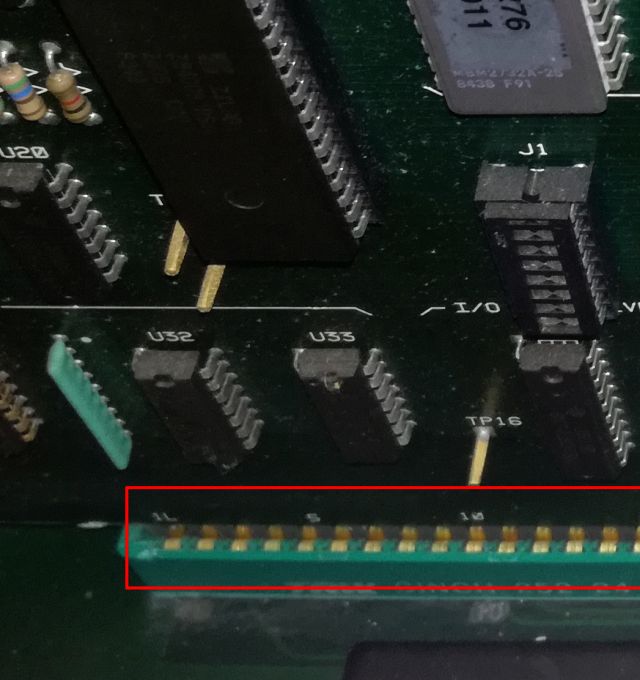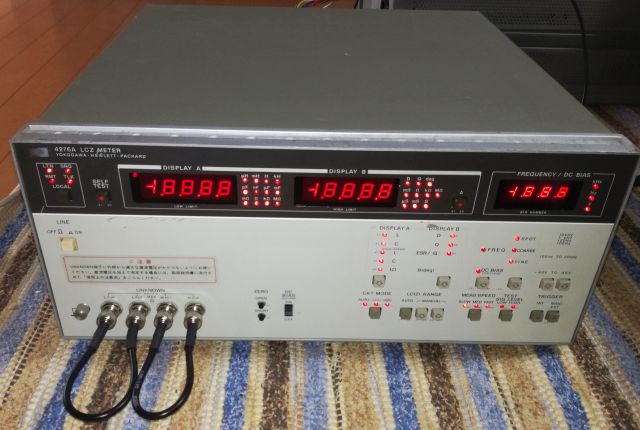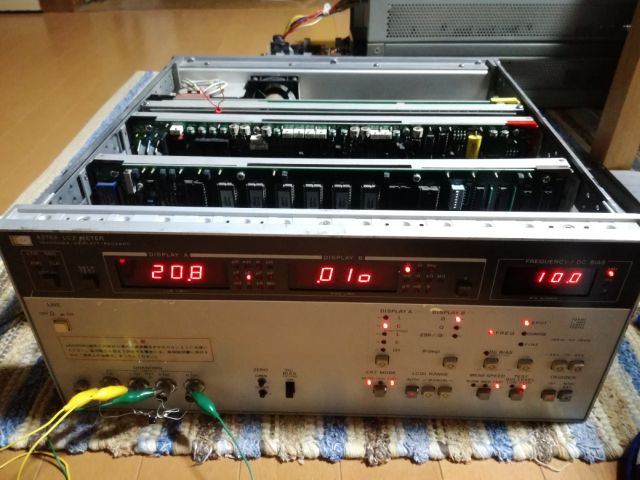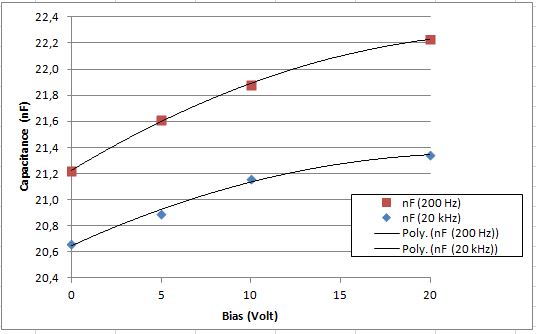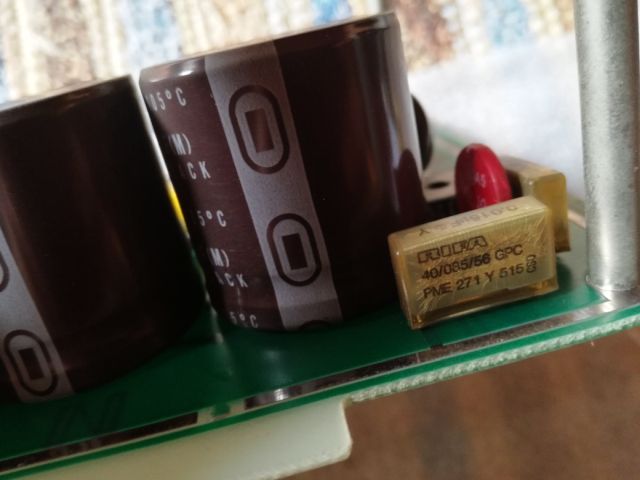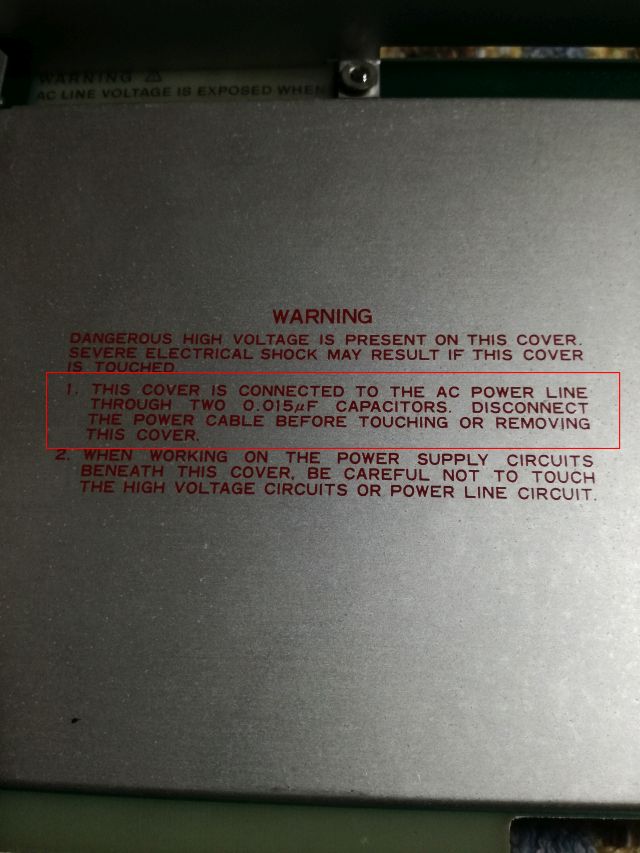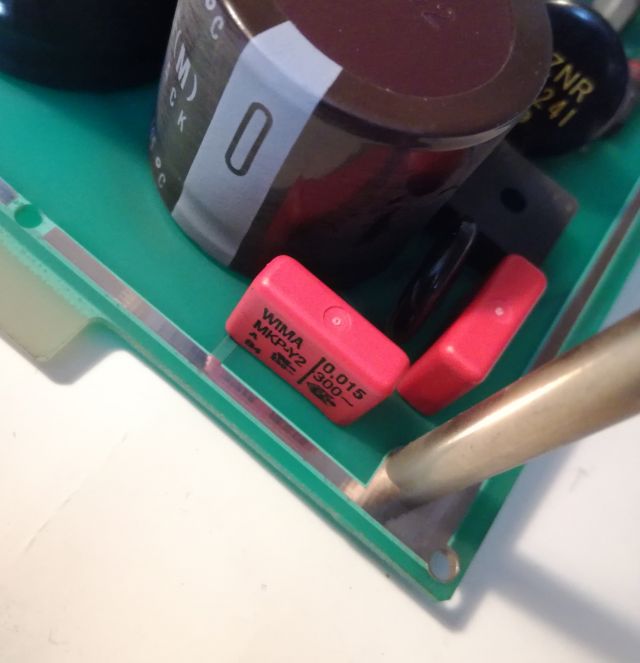The HP Yokogawa (Made in Japan) LCR meters are still very useful, these are 0.1% basic accuracy LCR meters – with various test frequencies from 100 Hz to 20 kHz. And, you can apply DC bias as needed to test ceramic capacitors, diodes, etc.
I would this meter for a marginal price, in Japan. It arrived in good overall state and well packaged, but very dirty inside. A quick review:
(1) Power supply seems OK, but the fan is not working.
(2) Display shows overrange and self test shows errors in the analog circuit. In some ranges, I get a reading but it is far off.
(3) Dirt, dirt, dirt – this instrument needs to be fully disassembled and cleaned, no doubt, and the front panel needs special treatment to remove all stickers and residues.
The top view – a lot of dust, and of the sticky kind.
In the corners and gaps, a wasp, and a dried frog. Probably, this instrument has been stored in some shed?
The main board – first, brushed of the dirt, then soaked it in 50% isopropanol. Take care of the fan hybrid, which is a thin ceramic plate – overall, a rather delicate construction. Not sure why they did’t just use regular components rather than a hybrid for the fan drive – there is a huge amount of unused space in the case!
The fan, it is a brushless fan, Buehler, which needs an external driver to commutate the phase.
The test setup – with an external 8 Volts supply. Turns out, the fan starts if we move it a bit. Probably, some issue with the driver.
A good phase – you clearly see the switching action of the transistor, grounding the phase wire for some time to move the fan forward.
After some probing, it is clear that one of the 3 phases isn’t working!
Tested all the timing capacitors of the driver – all good!
But – one of the transistors, SMD, marked “B15” is not OK! B15, this is a 2n2222a equivalent transistor – watch out, there are different pinouts.
Unfortunately, I had no SMD NPN transistor of suitable kind at hand, so I soldered in a 2N5551, for test purposes.
It is working – the transistor has a bit less strong/fast switching action, but no problem, the fan is working again!
Next – we have to fix the analog circuit. This is a nice board, with several hybrids. First, we check the power supplies – HP designed this to have all individual +-12 Volt regulators, for each sub-section (all sections are nicely labeled, and clearly identified).
After some difficult probing – found one bad 12 V regulator! It even had some traces of corrosion – maybe it was running hot or some other failure.
Some test – still not working – at least not in all ranges. Seems the input amplifier is clipping the signal. Clearly, something is wrong with the range switching.
… about 1 hour later, traced the signal back to the range selector logic, one bit is not getting through – it got stuck at the edge connector of the CPU board – the edge connector shows some residue and oxidation. Cleaned it thoroughly with an eraser, and alcohol.
Finally, self test passed!
… testing a 22 nF capacitor.
It is a really great instrument to test ceramic capacitors, and the impact of DC bias on their capacity!
As a last measure, inspected all the X and Y rated capacitors – it good practice to do so with any old instrument. These are safety capacitors, and they often fail with age and use.
The power supply cover is connected to the mains with a Y rated capacitor, and these don’t look good.
.. fitted new Y capacitors – feeling much safer now!

